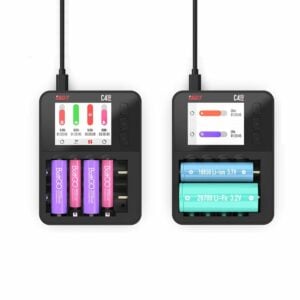Lithium Battery Charger Safety

Lithium-ion batteries have become the backbone of modern electronics, powering everything from smartphones to electric vehicles. As the demand for portable and rechargeable devices continues to rise, so does the importance of understanding and implementing safety measures in lithium battery charging. While lithium batteries offer numerous advantages, they also pose potential risks if not handled and charged properly. This article explores essential safety guidelines for lithium battery chargers to ensure the longevity and safety of these power sources.
Understanding Lithium-ion Batteries
Lithium-ion (Li-ion) batteries are widely used due to their high energy density, lightweight nature, and ability to hold a charge for extended periods. However, they are sensitive to overcharging, overdischarging, and high temperatures, which can lead to thermal runaway and, in extreme cases, result in fires or explosions.
Key Safety Guidelines for Lithium Battery Charging
Use the Right Charger: Ensure that you use a charger specifically designed for lithium-ion batteries. Different devices and applications have varying charging requirements, including voltage and current. Using an incompatible charger can lead to overcharging or undercharging, compromising the battery’s safety and performance.
Charge in a Controlled Environment: Charge lithium batteries in a well-ventilated area with a stable temperature. Avoid charging batteries in extreme temperatures, as high temperatures can lead to thermal stress and compromise the battery’s integrity. Charging in a controlled environment minimizes the risk of overheating and potential hazards.
Avoid Overcharging and Overdischarging: Overcharging and overdischarging are major contributors to lithium-ion battery degradation. Most modern devices and chargers are equipped with protection circuits to prevent overcharging. However, it’s essential to unplug devices once they reach a full charge and avoid draining the battery to extremely low levels, which can reduce its lifespan.
Use Quality Chargers: Invest in high-quality chargers from reputable manufacturers. Cheap or counterfeit chargers may lack proper safety features and can pose significant risks. Quality chargers often come with features such as overcurrent protection, overvoltage protection, and temperature control to ensure safe charging.
Regularly Inspect Cables and Connectors: Check charging cables and connectors for signs of wear, damage, or fraying regularly. Damaged cables can cause short circuits, leading to potential hazards during charging. Replace any faulty components promptly to maintain a safe charging environment.
Follow Manufacturer Guidelines: Always adhere to the manufacturer’s guidelines for charging your specific device or battery. Manufacturers provide recommended charging currents, voltages, and environmental conditions to optimize battery performance and safety.
Avoid Fast Charging in Extreme Conditions: While fast charging is convenient, it generates more heat than standard charging. Avoid fast charging in extreme temperatures, as it can lead to thermal stress and compromise the battery’s safety. If possible, charge your device in a cooler environment.
Store Batteries Properly: When not in use, store lithium-ion batteries in a cool and dry place. Avoid exposing them to direct sunlight or extreme temperatures. Store batteries in a non-conductive container to prevent accidental short circuits.
